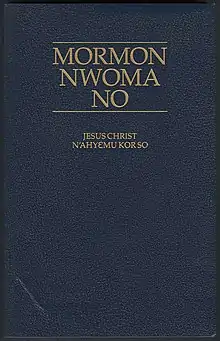| Ɛ | |||
|---|---|---|---|
| Ɛ ɛ | |||
 | |||
| Usage | |||
| Writing system | Latin script | ||
| Type | Alphabetic and Logographic | ||
| Unicode codepoint | U+0190, U+025B | ||
| History | |||
| Development |
| ||
| Other | |||
| Writing direction | Left-to-Right | ||

Latin epsilon or open E (majuscule: Ɛ, minuscule: ɛ) is a letter of the extended Latin alphabet, based on the lowercase of the Greek letter epsilon (ε). It occurs in the orthographies of many Niger–Congo and Nilo-Saharan languages, such as Ewe, Akan, Lingala, Dinka and Maasai, for the vowel [ɛ] or [e̙], and is included in the African reference alphabet.
In the Berber Latin alphabet currently used in Algerian Berber school books,[1] and before that proposed by the French institute INALCO, it represents a voiced pharyngeal fricative [ʕ]. Some authors use ƹayin ⟨ƹ⟩ instead; both letters are similar in shape with the Arabic ʿayn ⟨ع⟩.
The International Phonetic Alphabet (IPA) uses various forms of the Latin epsilon:
- U+025B ɛ LATIN SMALL LETTER OPEN E represents the open-mid front unrounded vowel
- U+025D ɝ LATIN SMALL LETTER REVERSED OPEN E WITH HOOK represents the rhotacized open-mid central vowel
- U+025E ɞ LATIN SMALL LETTER CLOSED REVERSED OPEN E represents the open-mid central rounded vowel (shown as U+029A ʚ LATIN SMALL LETTER CLOSED OPEN E on the 1993 IPA chart)
The Uralic Phonetic Alphabet uses various forms of the Latin epsilon:[2]
- U+1D08 ᴈ LATIN SMALL LETTER TURNED OPEN E
- U+1D4B ᵋ MODIFIER LETTER SMALL OPEN E
- U+1D4C ᵌ MODIFIER LETTER SMALL TURNED OPEN E
List of languages that use Latin epsilon
Niger-Congo
Akan, Bambara, Baule, Dagbani, Dogon, Douala. Ewe, Fante, Frafra, Fon, Ga, Jula, Kabiye, Kpelle, Kuya, Lingala, Loma, Mende, Moore, Soninke, Twi, Vai.
Nilo-Saharan
Unicode
Latin epsilon is called "Open E" in Unicode.[3]

| Preview | Ɛ | ɛ | ||
|---|---|---|---|---|
| Unicode name | LATIN CAPITAL LETTER OPEN E | LATIN SMALL LETTER OPEN E | ||
| Encodings | decimal | hex | dec | hex |
| Unicode | 400 | U+0190 | 603 | U+025B |
| UTF-8 | 198 144 | C6 90 | 201 155 | C9 9B |
| Numeric character reference | Ɛ | Ɛ | ɛ | ɛ |
See also
- Open O
- Writing systems of Africa (section on Latin script)
- Open-mid front unrounded vowel
- Greek Epsilon
- Reversed Ze Ԑ (Cyrillic script)
References
- ↑ "Tamazight-Dzayer".
- ↑ Everson, Michael; et al. (2002-03-20). "L2/02-141: Uralic Phonetic Alphabet characters for the UCS" (PDF).
- ↑ Asmus Freytag; Rick McGowan; Ken Whistler (2006-05-08). "Unicode Technical Note #27: Known Anomalies in Unicode Character Names". The Unicode Consortium. Retrieved 2009-02-24.
This is actually a Latin epsilon and should have been so called.